An Endurance Test Like No Other
Published on August 24th, 2015
The 10th edition of the Clipper 2015-16 Round the World Yacht Race begins August 30 in London, when twelve Tony Castro designed Clipper 70s led by professional skippers and amateur crew will set out on their 40,000 mile competition.
Divided into eight legs and 16 individual races, people can choose to complete the full circumnavigation or select individual legs. While there is a cost for the crew to participate, it remains the only race in the world which provides this kind of opportunity on such a large scale.
Julia Wall-Clarke, PR Manager for the race, provides an update …
Tell us about the skippers.
Twelve new skippers have been selected this year, from a vast mixture of experiences. We have everyone from an ex-Army Sergeant, two female skippers competing in the same race for the first time in the history of the race, and a Ukrainian/German skipper with a PhD in Astrophysics from Cambridge University.
Explain the training program for the skippers.
The Clipper Race’s Learning and Development Partner and Team Sponsor Mission Performance helps train the Skippers before and during the race. Director and former Royal Marine Rob Lewis heads up Mission Performance’s leadership programme, and Clipper Race Director Justin Taylor leads the in-house Skipper training programme.
Classroom lessons from some of Mission Performance’s facilitators such as its sportspeople, polar explorers and experts from the performing arts worlds have helped deliver coaching lessons that will be ongoing through the race.
Key themes they aim to develop include effective communication, self-awareness, conflict resolution, adaptive leadership styles and how best to build high performing, positive, cohesive teams and cultures.
Topics include Watch Leader selection and leadership, meetings and routines on board, induction for those joining on new legs and strategy and implications. Mission Performance provides support and coaching for Skippers and crew members at various stopovers.
In addition they are introducing a remote mobile learning platform. Ninety second video refreshers with associated actions or ‘to do’s’ will strengthen competence and give additional confidence as the race progresses.
Race Director Justin Taylor and Deputy Race Director Mark Light lead an intense five-month in-house skipper training programme following the appointment of the Skippers. There are practical and theoretical elements including instruction from the Royal Yachting Association.
Navigation, meteorology, maintenance, communications and medical training all take place, as well as advanced sail training on the Clipper 70.
“Clipper Race skippers are able to take on huge physical and mental challenges to successfully lead their novice teams,” adds Justin. “Therefore the level of intensity of the training is very high to match what will be one of the toughest jobs on the ocean.”
What kind of training program occurs for the crew?
As so many of our crew are new to sailing, or certainly haven’t been on board anything like the Clipper 70 yachts before, we start with a foundation course in ocean racing, regardless of individual experience levels.
Yacht maintenance and management, winch handling, racing tactics, survival at sea and weather routing are taught alongside the basics of good seamanship and living on board the yacht.
Safety is always at the forefront of everything we do in training. We always say ‘train hard and sail safe’. We practice regular, industry renowned Man Overboard drills using an 80-kilo, extremely lifelike dummy, and ensure all crew are fully competent with personal lifejacket wear and care, as well as safety on board at all times.
From day one, crew learn how to build and become part of a multi-disciplined high-performing team.
Split into four week-long practical courses with added theoretical elements, each level builds on the previous. Levels 1 to 3 take place on the previous generation of round the world yachts, the Clipper 68. Level 4 takes place on the Clipper 70, the actual race boat, with the team Skipper. Training takes place either in Gosport, UK, or Sydney, Australia.
Level 1: Crewing Skills – introduces the basics of sailing, how a boat functions and teaches personal safety, along with the principles of good seamanship. Crew get out on the water on the first day to start learning the ropes. The team is introduced to tacking and gybing, reefing, racing headsail changes, helming, sail trim and Man Overboard drills. It can be a steep learning curve and a physically and mentally exhausting week.
Level 2: Offshore Sailing and Life on Board – introduces the watch system for the first time, with the crew split across two 24-hour rotating watches. The yacht stays out at sea for the duration of the course so crew can get used to life on board, with cooking, cleaning and engineering duties a part of this.
Sail trimming is also introduced during Level 2 with more importance paid to boat speed and racing tactics.
A one-day sea safety survival course teaches crew about the safety equipment and skills needed to survive in the event of an incident at sea which means the boat has to be abandoned.
Level 3: Asymmetric Spinnaker Training and Racing Techniques – introduces the asymmetric kite. This level enables crew to further develop their sailing skills and gain new navigational, meteorological and watch leader skills in an offshore environment.
Level 4: Team Tactics and Offshore Fleet Racing – takes place on a Clipper 70 with the team’s actual race skipper. It consolidates all the crew’s sailing, seamanship and racing skills in an offshore racing environment and enables the race skippers to develop their race teams and boats in a realistic setting.
This final level of training provides the skipper with the opportunity to assess individual skills and to begin to formulate strategies and tactics for their individual race campaigns.
We are constantly developing the different levels to keep pace with the increasing demands of the race and to ensure crew are trained to the highest level.
How many crew will each team have during a leg?
The maximum we will have on board at any one time is 22 crew, with the average across all the legs at eighteen people.
The fleet of Clipper 70s were new for the 2013-14 edition. What kind of refit has occurred to prepare them for this edition?
After each of the 12 Clipper 70s clocked up an average of 50,000 miles during their inaugural circumnavigation, the Maintenance Team at Race HQ has been hard at work since October 2014 to refit the yachts in preparation for next edition.
Each of the 70-foot yachts are motored from Race HQ in Gosport to Hamble Yacht Services where they are lifted and refitted.
The yachts are stripped of their inventory and soft furnishings, which go off for cleaning prior to departing Gosport, and their engines and generators are serviced.
On arrival in Hamble, the masts are removed and all of the standing rigging is replaced. Once washed off and in the shed, there is a complete sand and repaint throughout the interior and a varnishing of the wood surrounds in the galley. On deck, all of the kit is serviced or replaced as needed.
Rudders are dropped in order to check the shafts and blades and to allow access to service the rudder bearings; the full steering system is given an overhaul. The hulls are antifouled, propellers serviced and anodes changed.
As with all refits, there will also be some changes to the yachts in accordance to lessons learnt from the past race. New parts will be fitted in various places around the yacht and a little reorganisation made here and there in order to make life easier for the crew, and from a maintenance perspective.
After four to five weeks, the yachts are then launched off and returned to Gosport for re-commissioning. Final defects are rectified, the inventory and safety kit are reinstated, final checks are made and the paperwork is reinstated. Lastly the rig is retuned before the yachts return to service and crew training continues.
The refit period lasts nine months, with each yacht out of action for eight to nine weeks in total, before being declared fit and ready to be called home for the next generation of ocean racers.
Background:
The 40,000 mile Clipper 2015-16 Round the World Yacht Race will begin in London, UK on August 30 for the fleet of twelve identical Tony Castro designed Clipper 70s. The series is divided into 16 individual races, with the team with the best cumulative score winning the Clipper Race Trophy.
The ports along the race route are Rio de Janeiro, Brazil; Cape Town, South Africa; Albany, Sydney, Hobart and Airlie Beach, Australia; Da Nang, Vietnam; Qingdao, China; Seattle, USA; Panama; New York, USA; Derry-Londonderry, Ireland; and Den Helder, Netherlands before returning to London by late July.


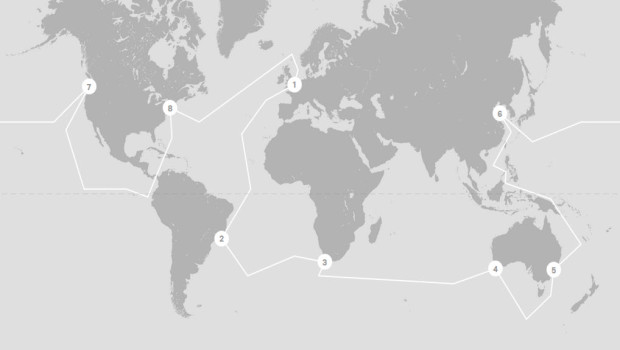


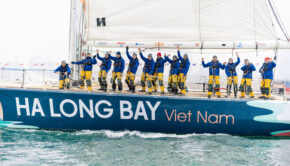
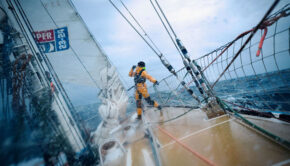
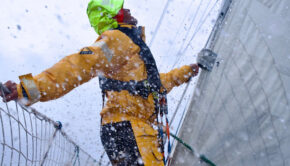
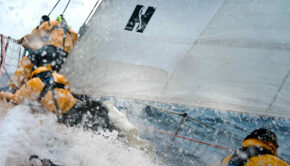
 We’ll keep your information safe.
We’ll keep your information safe.